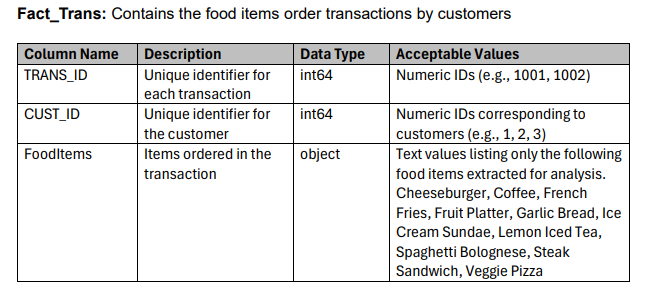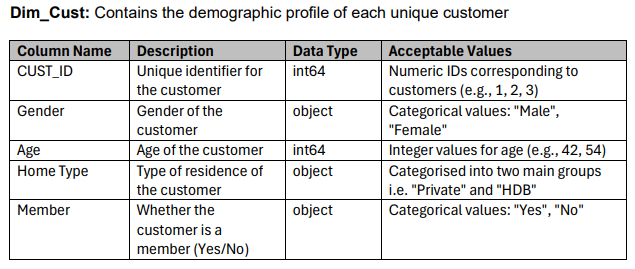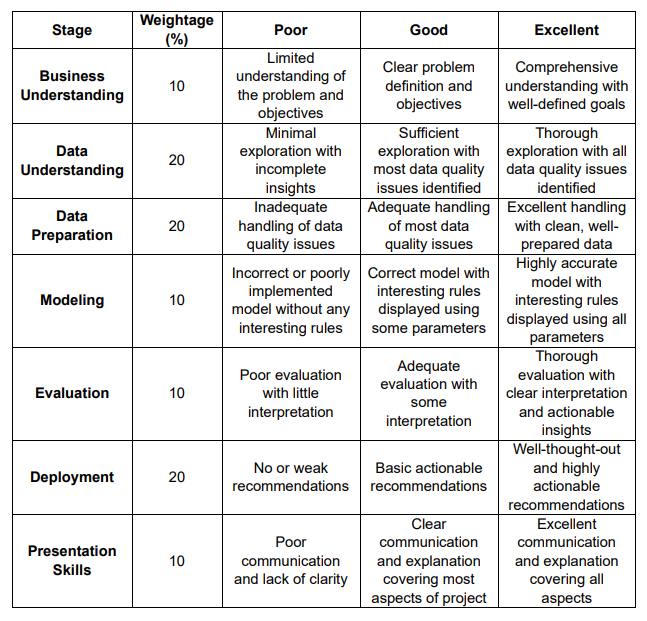BHB3701 Assignment1: Artificial Intelligence in Hotel Gastronomy
| University | Singapore Institute of Technology (SIT) |
| Subject | APPLIED DATA ANALYTICS |
1. Company Background
NEO Hotel operates a well-known in-house restaurant, which has historically been a key feature for guests and walk-in customers. Positioned as a premium dining option, the restaurant offers a diverse menu that includes local specialties, international cuisines, and a range of beverages. Despite its strategic location within the hotel, the restaurant has recently faced a significant downturn in sales. This decline has been attributed to several factors, including increased competition from nearby dining establishments and changing customer preferences.
Management has recognized the need for data-driven insights to turn around the restaurant’s performance. Currently, the restaurant lacks clear visibility into customer ordering patterns, which makes it difficult to design effective promotions or meal combos. Ultimately, the goal is to improve customer satisfaction, increase repeat visits, and boost overall sales revenue. In addition to targeted promotions, the insights gained from this analysis could inform staff training on upselling techniques and enhance the restaurant’s marketing campaigns. This holistic approach will help the restaurant regain its competitive edge and solidify its reputation as a top dining destination.
2. Your Role
Recognizing the importance of data-driven decision-making, the management has formed an analytics task force to address the restaurant’s challenges. The
management has invited you to join the task force as a Data Analyst recalling that you have previously completed an Applied Data Analytics module as a Hospitality and Tourism Management undergraduate.
Your task is to develop a rule-based Association Rule Mining machine learning model. This model can uncover interesting relations between food items ordered by guests in the restaurant to create AI-driven recipe to foster culinary innovation by suggesting unique dishes and flavor combinations, enhancing the overall dining experience for guests.
3. Data Extraction
The structured data required for this analysis was extracted from the company’s
Enterprise Data Warehouse (EDW) system. The IT department, leveraging SQLbased queries, extracted relevant order and transaction data from the data mart
designated for restaurant operations. The following data dictionary was also provided
as part of the Metadata given by the IT department.
Data Dictionary


4. Your Tasks
Download the given Excel dataset and follow the CRISP-DM framework closely to
complete each stage. You may follow the suggested steps in each stage as shown
below.
4.1.Business Understanding
4.1.1. Come up with a relevant Business Problem, Business Objective and Data
Mining Goals for the given background
4.2.Data Understanding
4.2.1. Import the dataset and perform the necessary table joins
4.2.2. Perform Visual and Non-visual data exploration to check for any data
quality issues
4.3.Data Preparation
4.3.1. Perform data cleansing to fix any identified data quality issue(s)
4.3.2. Perform data transformation to ensure data structured in a format suitable
for Association Rule Learner model
4.4.Modeling
4.4.1. Build the Association Rule Learner model using the cleansed data
4.4.2. Adjust the settings of the Association Rule Learner model such that there
are enough interesting and actionable rules displayed
4.5.Evaluation
4.5.1. Evaluate each rule generated in the final model
4.5.2. Identify at least three interesting rules that are actionable
4.6.Deployment
4.6.1. Devise a marketing strategy using the identified interesting rules in the
evaluation stage
4.6.2. Your marketing strategy should be tailored towards solving the business
problem identified in the ‘Business Understanding’ stage
5. Deliverables
1. Power Point Slides Submit a deck of not more than 10 slides (include Cover slide) which should cover step 4.1 and 4.6 indicated in the CRISP-DM in section 4. You are to include the Course Code, Student ID, Your Name, and Submission Date on the Cover slide.
2. Self-Recorded Video (Turn on your camera for me to verify your identity)
Do a self-recorded video for your presentation using the Power Point Slides. Your recording should not exceed 8 minutes. During the presentation, you should also demo the KNIME workflow describing the utilization of each node especially for step 4.2, 4.3, 4.4 and 4.5 indicated in the CRISP-DM in section 4.
3. KNIME workflow
Submit your KNIME workflow by exporting it as ‘.knwf’ format.
6. Marking Rubrics
Below is a table of marking rubrics based on a 3-point grading scale (‘Poor’, ‘Good’, ‘Excellent’) for each of the six CRISP-DM stages, along with presentation skills and marketing strategy:

- HS3225 Transition and Palliative Care Written Assignment | Nanyang Polytechnic
- NUR 3015 Health and Social Policy Summative Assignment Report 2025/26 | SIT
- PS5009MKT Digital Business Assessment Coursework | Coventry University
- 5007MKT Marketing Insight Assignment Coursework 2 – Coffee Shop Industry
- HL3044 The Legends of King Arthur Assignment Semester 1, AY2025-26 | NTU
- AVM343 Airport Design and Planning End-of-Course Assessment – July Semester 2025
- BX2091 Tourism & Leisure Management Assessment 3 Research Workbook 2026 | JCU
- ICT239 Web Application Development End-of-Course Assessment – July Semester 2025
- Health Economics and Policy Assessment Essay | TU London
- Project on Probability and Statistics using MATLAB Assignment | NUS


